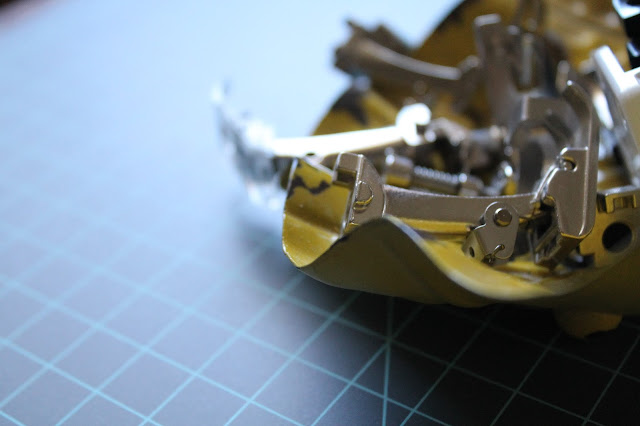DIYU: Attaching a Button
Today we're kicking off our DIYU: School for Crafting Misfits series here on the TrashN2Tees blog. I'm super excited to have Karen Lepage join us! She is a co-host of monthly Southeast Michigan Crafty Meetups and author of Sewing for Boys. What does she think is one of the first basic steps to mastering the art of sewing? Read on to find out. Karen designs sewing patterns, teaches sewing classes, volunteers in the Ann Arbor and Detroit crafty communities, and makes bespoke garments for people who are sensitive, hard-to-fit, or just too individual for off the rack clothes. Yeah, she's that cool.
One of the very first steps to feeling accomplished in the realm of sewing is to master the art of attaching (or re-attaching) a button. As with every sewing technique, there is more than a handful of ways to accomplish this. Since I specialize in sewing for children, and I am very tough on my own clothes; my button sewing method is intended to be kid-proof (and me-proof).
For this tutorial, you will need the following supplies:
- Garment or accessory in need of a button
- Hand-sewing needle
- Scissors
- Thread
- Beeswax
- Appropriately sized button for the buttonhole in question (I almost always use vintage buttons from my grandmother’s stash – hunting is half the fun!)
- Pencil or other marking implement
Trim away any loose threads from your buttonholes:

Lay your garment closed as it will be worn: (for girls: right over left; for boys, left over right) It’s easy to remember giRLs…I always used to forget until I noticed that Girls contains R-L, now I never do.)

Mark your button placement with a pencil, through the buttonhole, onto the button layer:

Cut a length of thread as long as your arm, the prepare the thread by running it through beeswax:

Fold the thread in half, then thread this folded end through the eye of the needle:

Match this folded end to the loose end and tie a knot. You will now be sewing with four (4) threads running through your needle.
Take a stitch down into your fabric, then back up approximately the distance between your buttonholes. Before the knot touches the fabric, pull the needle through so you make a knot before you even touch a button. This will keep the thread firmly attached to the fabric, and leave the knot away from your (or your kid’s) skin. Not only is this more comfortable, but it’s also more durable, as there will be no rubbing of skin against knot, potentially loosening your work.


Take two stitches through the buttonholes and the fabric. Slip your needle through the buttonhole one last time, but don’t pierce the fabric. Your thread will be in between the button and the fabric. Wrap the thread around your stitches twice.

When you have wrapped the stitches, tie a knot by first stitching through the loop before you tighten it against the stitches.

Then, stitch through the wraps and stitches. Pull the threads taut, and tie a double knot.

Snip the thread close to the knot, so that all thread and knots will be hidden underneath the button.

You will have created a small “shank” to stand the button away from the fabric, so you can fit your buttonhole layer between the button and the fabric. It should look a little like this:

Enjoy your buttons for years of washing and wearing!

The fabric is organic cotton from cloud9 fabrics in Tsuru, buttons are vintage, dress is The Geranium Dress from made-by-rae.com
Connect with Karen:




Comments
Post a Comment